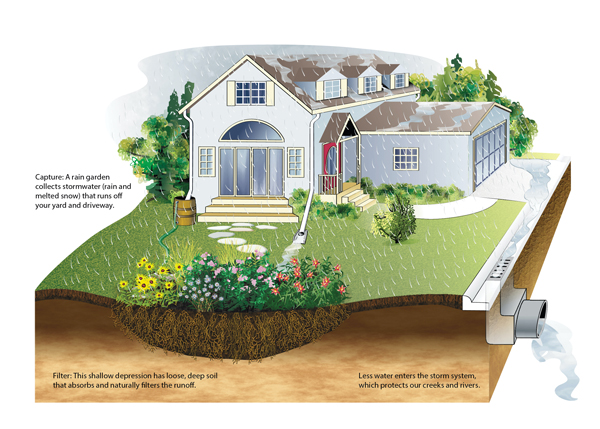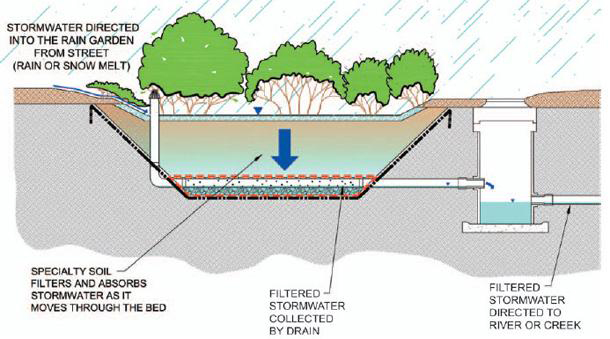Rain Gardens in Calgary
Rain gardens are garden beds planted in a slight depression, designed to catch and hold rainwater. The rainwater typically comes from a downspout directed at the rain garden which passively waters the plants.
In addition to providing a low maintenance water source to plants, rain gardens:
- Are planted with beautiful, hardy, low-maintenance, water wise plants
- Attract birds, butterflies and mosquito-eating dragonflies
- Complement any landscape and enhance the beauty of the neighbourhood
Rain gardens can help protect our watershed by managing the amount of sediment and pollutants that reach our rivers from our stormwater system.
They also help in reducing riverbank erosion and localized flooding and runoff, by allowing for stormwater to soak into the ground.
In communities where there is not sufficient land for large-scale stormwater management like wet ponds, rain gardens are a great alternative.
How do rain gardens work?
A rain garden is a landscaped plant bed that captures and filters stormwater before it returns to our stormwater system, and eventually our rivers.
When it rains, stormwater from the surrounding area is directed into the rain garden. Plants, layers of soil and gravel filter and absorb the stormwater.
The silt and other natural solids, like leaves, are collected on top of the gardens. Other pollutants (chemicals and bacteria) are filtered out and used by the soil and plants.
Rain gardens can differ in both design and size, from small residential rain gardens, to large engineered rain gardens that work as part of the stormwater system.
Residential rain gardens
Rain gardens are a great landscaping feature when placed in a low lying area of your garden. Rain gardens are shallow depressions filled with loose soil and planted with beautiful, hardy low maintenance water wise plants.
When the downspout from your roof is directed toward the rain garden, the plants and soil naturally filter the runoff before it enters our stormwater system.
If you are using the right plants, once established, your rain garden will require little to no water or fertilization.
Looking for more details on how rain gardens work and can benefit your yard? See our YardSmart Rain Garden Brochure (Arabic, Hindi, Punjabi, Simplified Chinese, Traditional Chinese).
Examples of a residential rain gardens
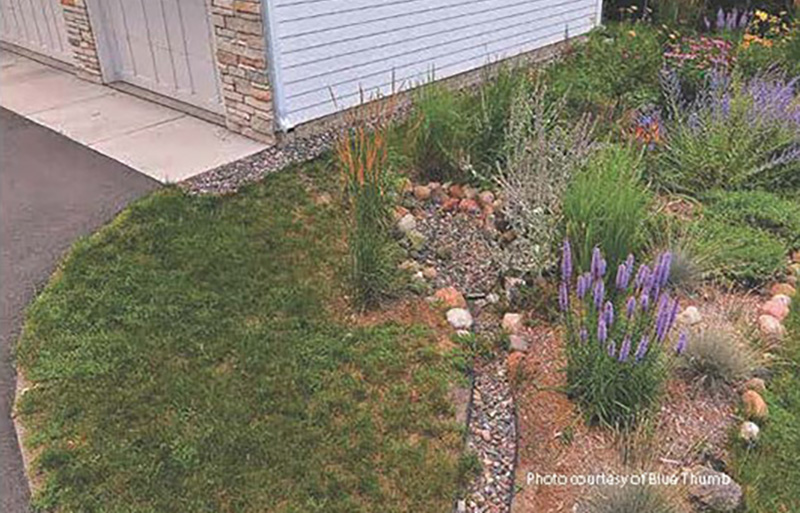
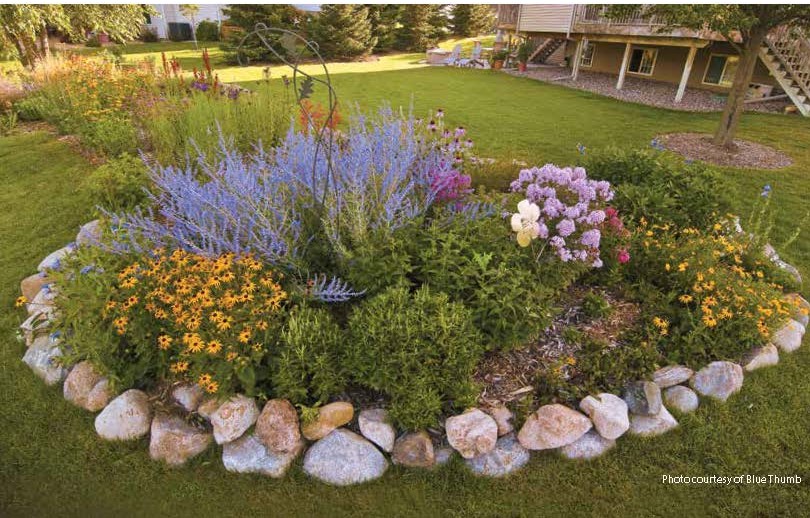
Engineered rain gardens
Engineered rain gardens are large, landscaped features located in communities and on City of Calgary property. These rain gardens are designed to allow overflow in a large rain event and hold standing water for no more than 48 hours.
Engineered rain gardens are a low impact development practice and are a part of our Stormwater Management Strategy.
Excess water not absorbed by the plants, seeps into the native soil below or collects in the drainage pipe located under the drainage layers. This drainage pipe connects to the stormwater system and carries excess, filtered water back to the river.
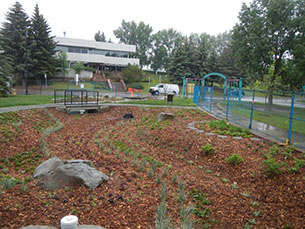
Bridgeland rain garden
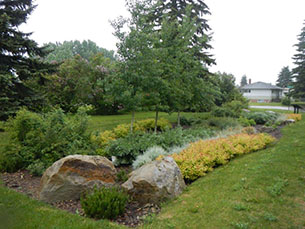
Mountainview rain garden


